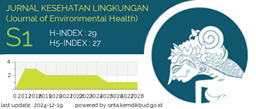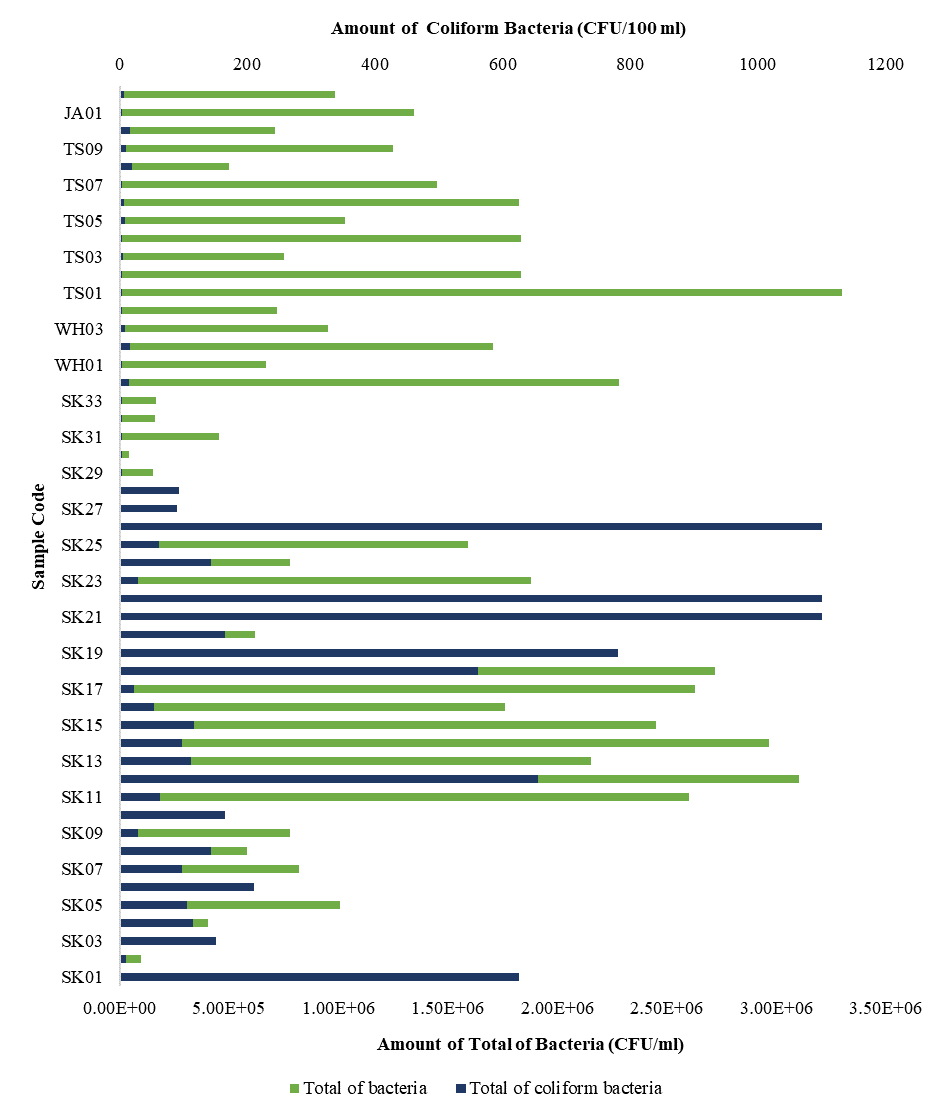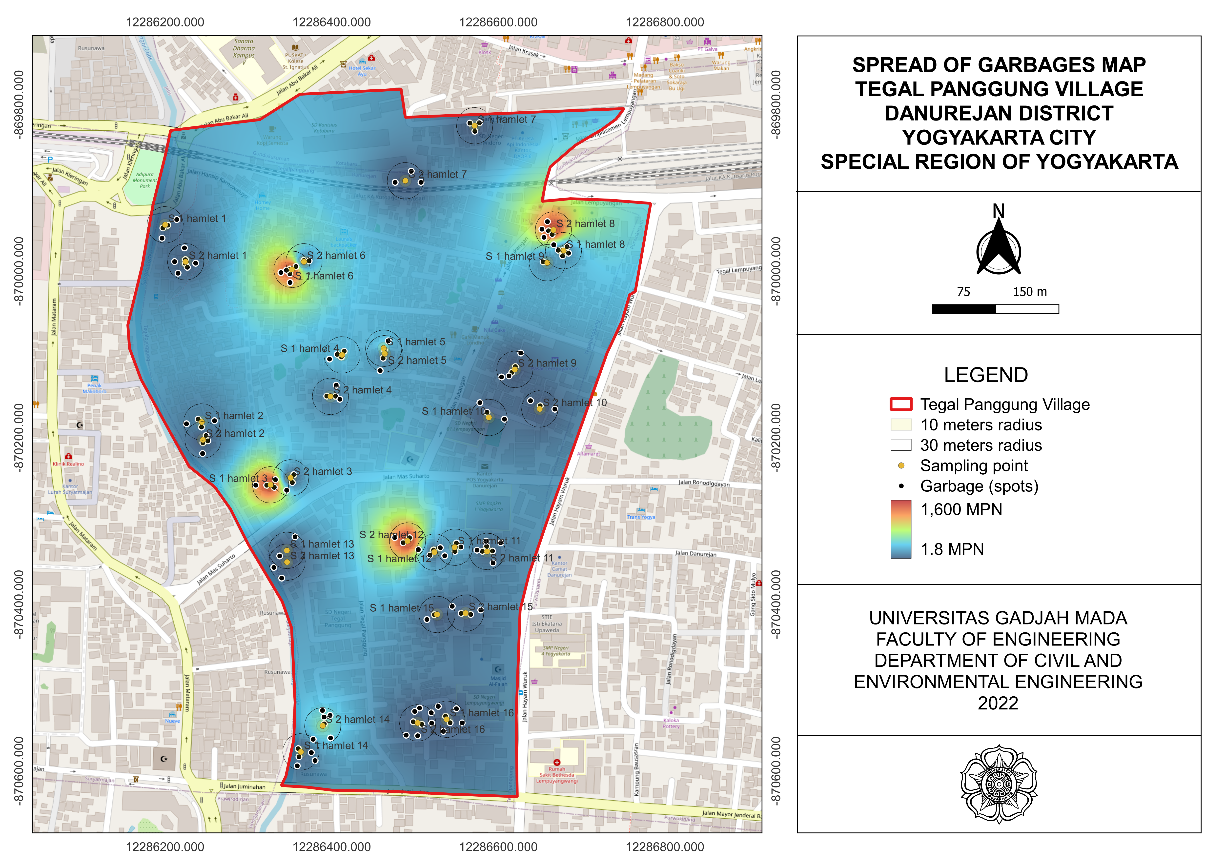Hygiene, Sanitation and Bacteriological Quality of Cow's Milk in Krajan Design, Gendro Village, Tutur Regency of Pasuruan District
Downloads
Agus, C. F, Eny. W, Dewi. dan Benito, H.P. (2014). Peran Mikroba Starter dalam Dekomposisi Kotoran Ternak dan Perbaikan Kualitas Pupuk Kandang. Jurnal Manusia dan Lingkungan, Vol. 21, No. 2, Juli 2014: 179-187. Pusat Studi Lingkungan Hidup Universitas Gadjah Mada (UGM) Tersedia di https://jurnal.ugm.ac.id/JML/article/view/18542
Anitasari, P. (2008). Hubungan Antara Kondisi Sanitasi Kandang Ternak dengan Kejadian Diare pada Peternak Sapi Perah di Desa Singosari Kecamatan Mojosongo Kabupaten Boyolali Tahun 2008. Skripsi. Universitas Muhammadiyah Surakarta.
BPS. (2013). Laporan Hasil Sensus Pertanian Nasional 2013. Jakarta : BPS. Tersedia di https://st2013.bps.go.id/st2013esya/booklet/at0000.pdf
BPS. (2016). Populasi Sapi Perah Menurut Provinsi 2009-2016. Jakarta: BPS. Tersedia di https://www.bappenas.go.id/download.php?id=14936?id=14936
BPTP-Ungaran. (2011). Sanitasi Kandang Sapi Perah. Jawa Tengah: BPTP Ungaran. Tersedia di http://pustaka.litbang.pertanian.go.id/agritek/lip50120.pdf
BPTP-NTB. (2011). Nilai Tambah Kompos dari Kotoran Sapi. Mataram : BPTP-NTB.
Cahyono, A.B. (2010). Keselamatan Kerja Bahan Kimia di Industri. Yogyakarta: UGM Press. Badan Penerbit dan Publikasi Universitas Gadjah Mada.
Cahyono, D. (2013). Microbiological Qualities (TPC, Enterobacteriaceae, Staphylococcus aureus) of Fresh Milk from Subdistrict Krucil Probolinggo. Jurnal Ilmu dan Teknologi Hasil Ternak, April 2013, Hal 1-8. Vol. 8, No. 1 ISSN : 1978 – 0303. Tersedia di http://jitek.ub.ac.id/index.php/jitek/article/view/170
Centers for Disease Control and Prevention. (2015). Escherichia coli. Avaible at: https://www.cdc.gov/ecoli/general/
Costa C H J, Hotzel J M, Longo C, Balcao F L. (2013). A survey of management practices that influence production and welfare of dairy cattle on family farms in southern Brazil. Journal Dairy Sci. 96(1):307–317. Tersedia di https://www.ncbi.nlm.nih.gov/pubmed/23102960
Harjanti ,D.W., J. Y. Ridho., S. Priyo dan Nurwantoro. (2016). Evaluasi Kualitas Susu Segar di Kabupaten Klaten. Jurnal Agromedia,Vol 34, No. 1 Maret 2016. Semarang; Indonesia: Fakultas Peternakan dan Pertanian; Universitas Diponegoro. Tersedia di http://www.jurnalkampus.stipfarming.ac.id/index.php/am/article/view/125
Kasnodihardjo. (2013). Cage Environmental Sanitation, Behavior, Aviant Influenza. National Public Health Journal Volume 8 Nomer 3 Tahun 2013. Pusat Teknologi Intervensi Kesehatan Masyarakat Badan Penelitian dan Pengembangan Kesehatan Kementerian. Jakarta: Fakultas Kesehatan Masyarakat Universitas Indonesia. Tersedia di http://journal.fkm.ui.ac.id/kesmas/article/view/357
Kementerian Hukum dan Hak Asasi Manusia Republik Indonesia. (2014). Undang-Undang RI Nomor 41 Tahun 2014 Tentang Perubahan Atas Undang-Undang Nomor 18 Tahun 2009 Tentang Peternakan dan Kesehatan Hewan. Tersedia di http://fkh.unsyiah.ac.id/uploads/1/7323c1d84c-uu412014perubahan-atas-undang-undang-nomor-18.pdf
Kementerian Lingkungan Hidup Republik Indonesia. (2010). Indonesia Second National Communication. Under The United Nations Framework Convention on Climate Change (UNFCCC). Jakarta.
Kusumaningsih A dan Ariyanti T. (2013). Cemaran Bakteri Patogenik pada Susu Sapi Segar dan Resistensinya terhadap Antibiotika. Jurnal Biologi April 2013 12(4): 9–17. Tersedia di http://e-journal.biologi.lipi.go.id/index.php/berita_biologi/article/view/513
Nerlich B, Brown B and Crawford P. (2009). Health, Hygiene And Biosecurity: Tribal Knowledge Claims in The UK Poultry Industry. Journal Health, Risk & Society 11 (6). pp. 561-577. ISSN 1369-8575. Tersedia di http://eprints.nottingham.ac.uk/1304/
Pranamyaditia, C.D. (2016). Risiko Keselamatan dan Kesehatan Kerja pada Pekerja Peternakan Sapi di PT X Cabang Kota Kediri. Skripsi. Universitas Airlangga.
Qomarudin, M., N. Putra dan Ahmad. (2011). Studi Manajemen Pemberian Pakan Pada Ternak Sapi Potong Di Kelompok Tani Ternak Mekar Sari Desa Tambak Rigadung Kecamatan Tikung Kabupaten Lamongan. Jurnal Ilmiah Ternak Volume 2 No.1 Juni 2011. Tersedia di http://journal.unisla.ac.id/pdf/18212011/muridi.pdf
Resnhaleksmana, W. (2014). Prevalensi Nematoda Usus Golongan Soil Transmitted Helminthes (STH) pada Peternak di Lingkungan Gatep Kelurahan Ampenan Selatan. Jurnal Media Bina Ilmiah ISSN No. 1978-3787 Volume 8 No.5, Agustus 2014. Tersedia di http://jurnal-online.um.ac.id/data/artikel/artikel960DE0C44A7C9D5D0F24CCD873D1268A.pdf
Santoso, B. (2010). Studi Higiene dan Sanitasi Susu Sapi Segar serta Kualitas Bakteriologis yang Mempengaruhinya. Skripsi. Universitas Airlangga
Sartika, Ratu A., Yvonne M., Indrawani., Trini dan Sudiarti. (2005). Analisis Mikrobiologi Escherichia Coli pada Hasil Olahan Hewan Sapi dalam Proses Produksinya. Jurnal Makara, Kesehatan, VOL. 9, NO. 1, Juni 2005: 23-28. Tersedia di http://journal.ui.ac.id/index.php/health/article/viewFile/365/361
Simamora T, Fuah A.M , Atabany A, Burhanuddin. (2015). Evaluation of Technical aspects on Smallholder Dairy Farm in Karo Regency of North Sumatera. Jurnal Ilmu Produksi dan Teknologi Hasil Peternakan. Vol. 03 No. 1, Januari 2015. Hlm: 52-58. Tersedia di http://journal.ipb.ac.id/index.php/ipthp/article/view/10814
Syarif E.K dan Harianto B. (2011). Beternak dan Bisnis Sapi Perah. Jakarta: PT Agromedia Pustaka
Utami, K. Binari., Radiati dan L. Endahwati. (2013). Kajian Kualitas Susu Sapi Perah PFH (Studi Kasus pada Anggota Koperasi Agro Niaga di Kecamatan Jabung Kabupaten Malang). Jurnal Ilmu-Ilmu Peternakan 24 (2): 58 – 66 ISSN: 0852-3581. Tersedia di http://jiip.ub.ac.id/index.php/jiip/article/view/174
Vahedi M, Nasrolahei M, Sharif M and Mirabi AM. (2013_. Bacteriological Study of Raw and Unexpired Pasteurized Cow's Milk Collected at the Dairy Farms and Supermarkets in Sari City in 2011. Journal of Preventive Medicine and Hygiene. 54(2): 120-123. Tersedia di https://www.ncbi.nlm.nih.gov/pmc/articles/PMC4718392/
Wijiastutik, D. (2012). Hubungan Higiene dan Sanitasi Pemerahan Susu Sapi dengan Total Plate Count pada Susu Sapi di Peternakan Sapi Perah Manggis Kabupaten Boyolali. Jurnal Kesehatan Masyarakat Volume 1 Nomer 2 Tahun 2012. Universitas Diponegoro. Tersedia di http://eprints.undip.ac.id/38709/1/4485.pdf
Yulianto, P. (2011). Penggemukan Sapi. Bogor: Penebar Swadaya
2. Formal legal provisions to access digital articles of electronic journal are subject to the provision of the Creative Commons Attribution-ShareAlike license (CC BY-NC-SA), which means that Jurnal Kesehatan Lingkungan is rightful to keep, transfer media/format, manage in the form of databases, maintain, and publish articles.
3. Published manuscripts both printed and electronic are open access for educational, research, and library purposes. Additionally, the editorial board is not responsible for any violations of copyright law.
JKESLING by UNAIR is licensed under a Creative Commons Attribution-ShareAlike 4.0 International License.







































